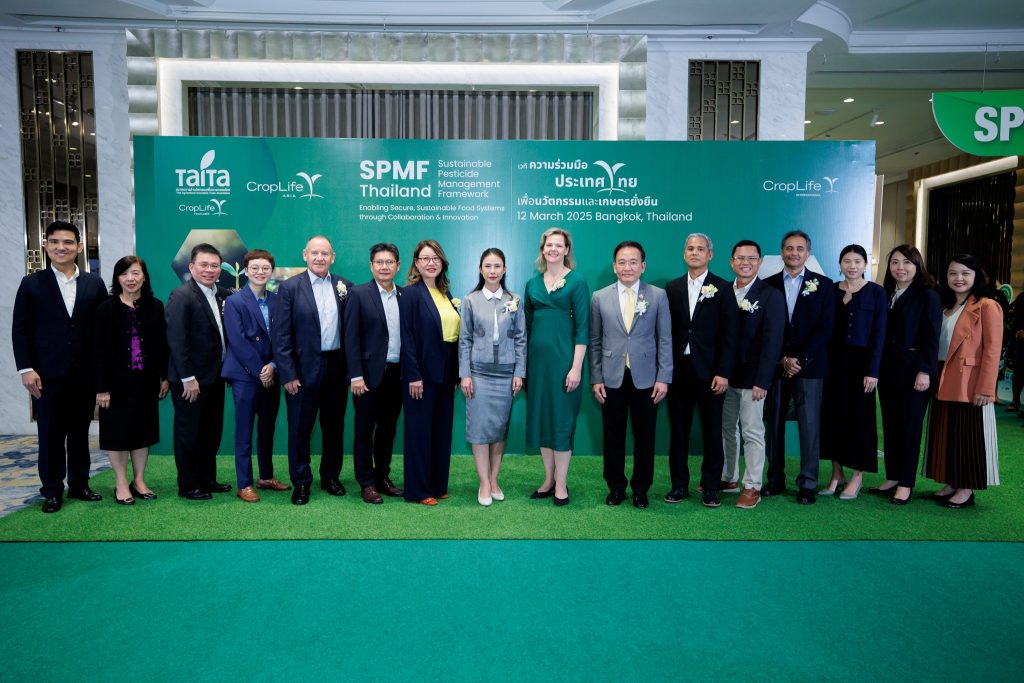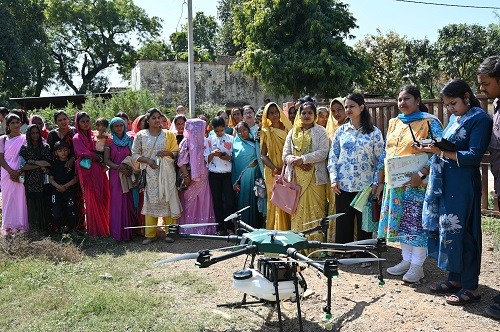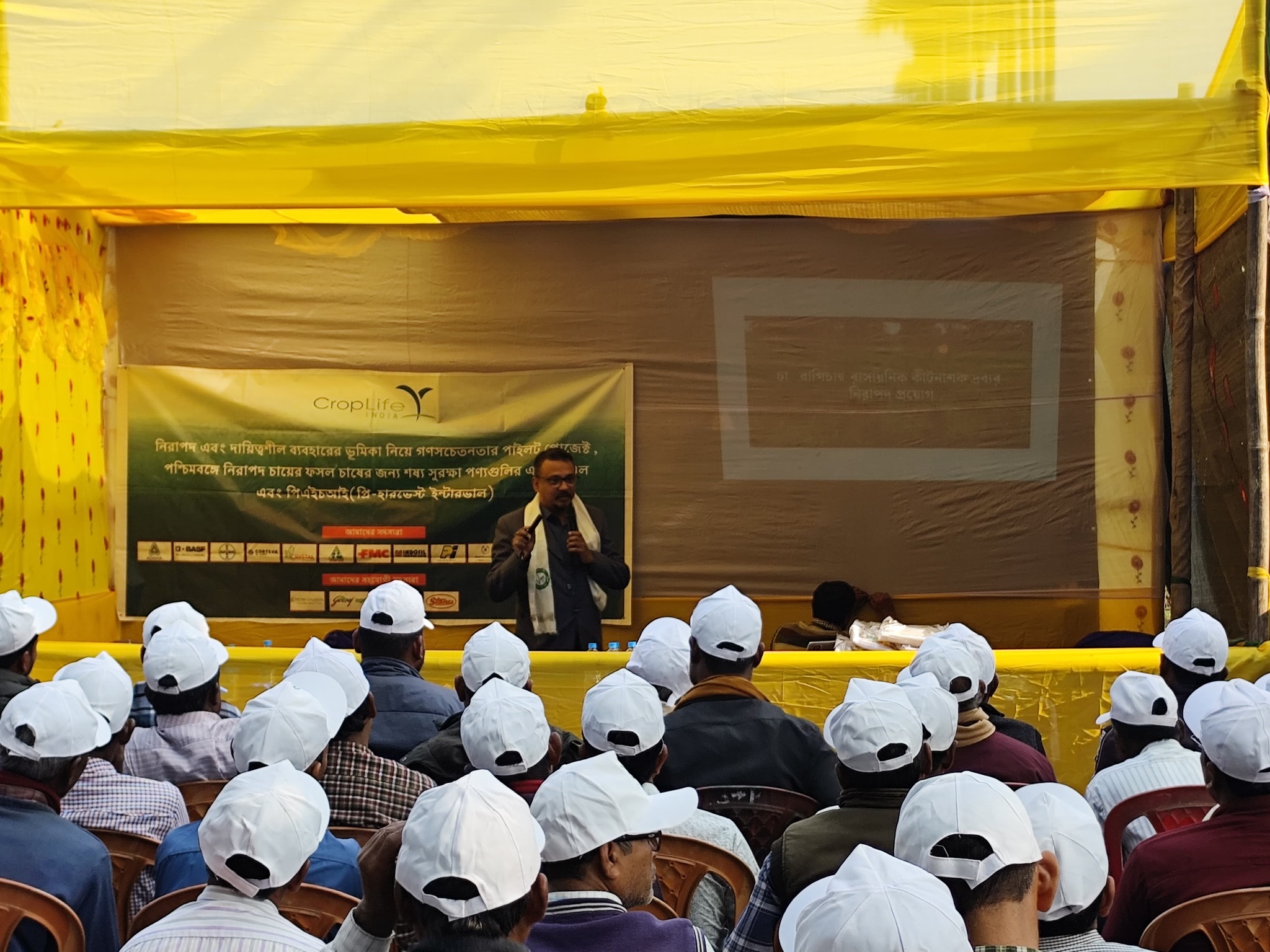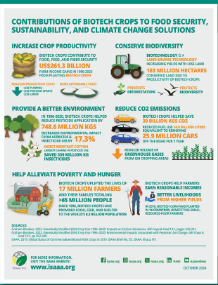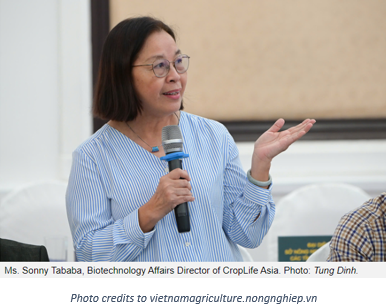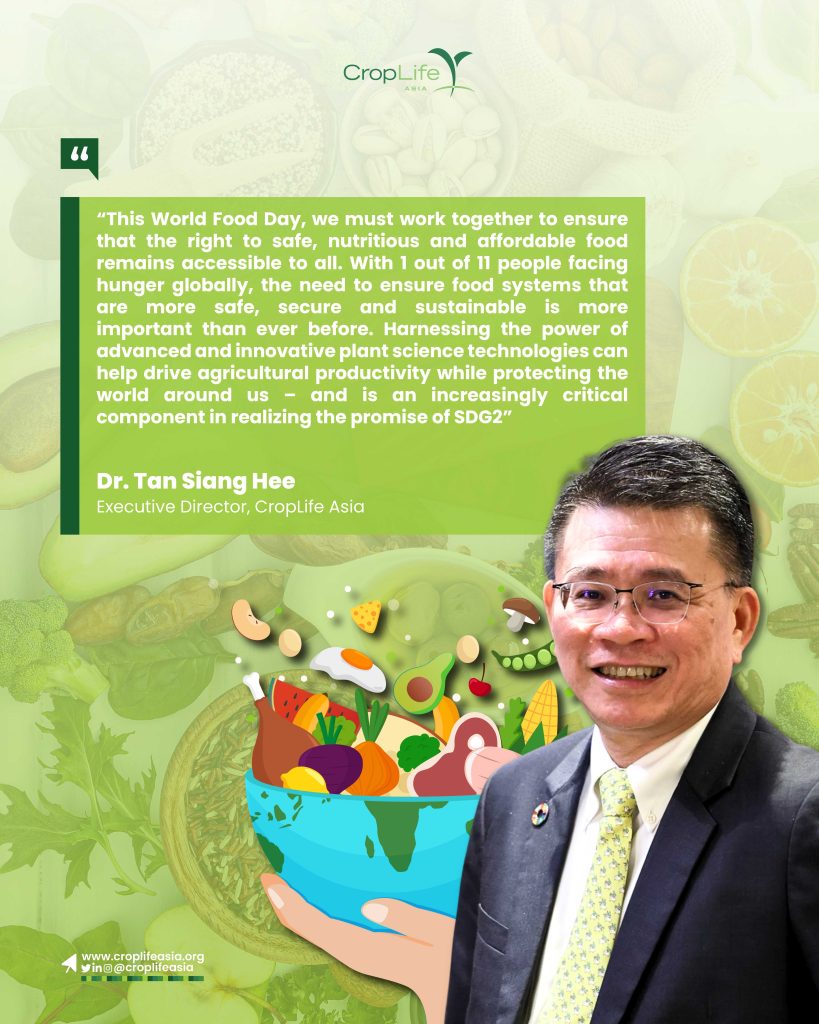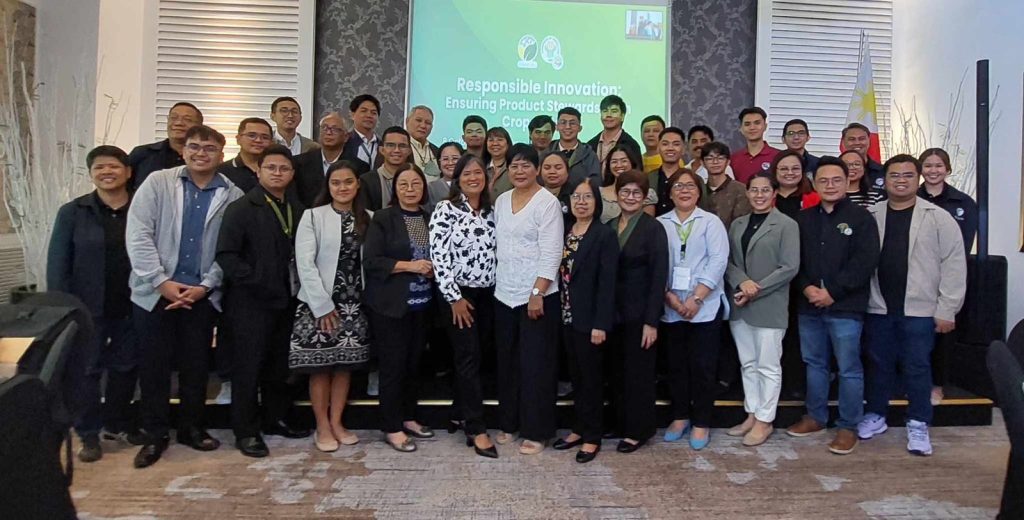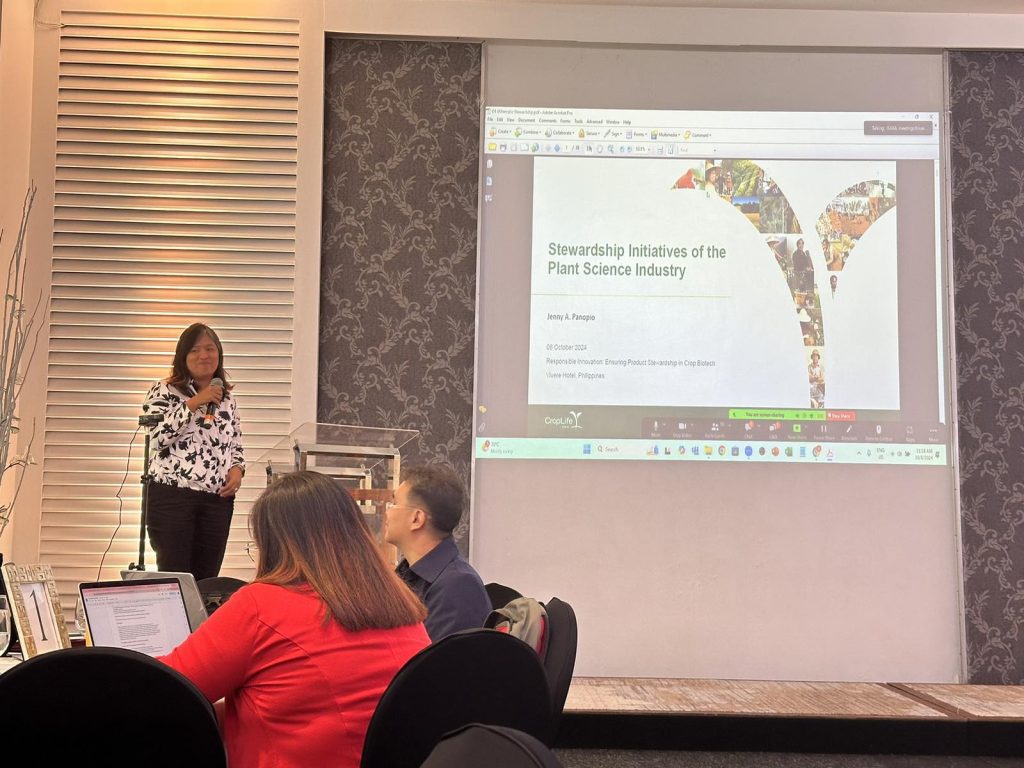Stay rooted in the latest agriculture news updates!
Australia I Bangladesh I China I India I Indonesia I Japan I Korea I Malaysia I Pakistan I Philippines I Taiwan I Vietnam I Plant Science I Global
Global News
EU Approves Three New Genetically Modified Corn Varieties for Food and Feed – Global Impact Likely
In a move that could influence global agricultural policy, the European Commission (EC) has approved the import and use of three genetically modified (GM) corn varieties for animal feed and human consumption within the European Union (EU). While cultivation remains banned, this decision marks a significant regulatory milestone for one of the world’s most stringent markets on GMOs. Read more…

CropLife International President and CEO Emily Rees is announced in B20 co-Chair role
CropLife International has on 16 April warmly welcomed the appointment of its President and CEO, Emily Rees, to the role of B20 Sustainable Food Systems & Agriculture Taskforce co-Chair under the South African Presidency of the G20. The Taskforce will provide the G20 Agriculture Ministers with strategic recommendations for endorsement by Heads of State in November, furthering its stated purpose of promoting sustainable agricultural practices, enhancing supply chain resilience, and ensuring equitable access to nutritious food. Read more…
8 major agritech and agriculture events in Southeast Asia 2025
These events range from country-specific expos highlighting local crop technologies to regional summits on food innovation. Read more…
Country News
Canola farmers feel forgotten amid trade war, ongoing Chinese tariffs
“There’s a lot of unknowns,” Rigetti said. “It really leaves us wondering if planting this canola crop is the right thing to do.” Read more…
IRRI showcases improved rice varieties and training farmers
The Climate-Smart Rice Value Chain (CS-RVC) Project, led by the International Rice Research Institute (IRRI) and supported through HSBC’s philanthropic funding, addresses these challenges by introducing innovative, scalable solutions tailored to the haor context and challenges. Read more…
China advances int’l cooperation in managing trans-boundary pests
Experts attending an annual meeting of the Chinese Ministry of Agriculture and Rural Affairs (MARA) and the Center for Agriculture and Biosciences International (CABI) said that China has established a platform with the neighboring Southeast Asian countries to combat the trans-boundary migratory major pests, such as the fall armyworm, aiming to achieve cost-effective, green and sustainable pest control. Read more…
U.S. tariffs hit agricultural exports as China turns to Brazil for soybeans
The U.S. agricultural sector is feeling the strain of the ongoing tariff confrontation with China, as key exports like soybeans and pork lose ground in the Chinese market. Read more…
Ministry cracks down on agricultural malpractices
Illegal behavior will be subject to a harsh response and include actions such as making or selling fake seeds, pesticides and fertilizers, producing or using banned pesticides or veterinary medicines, and faking quarantine documents. Read more…
Bayer eyes bigger role in China’s agri-tech innovation, products
As China’s agricultural sector undergoes a sweeping transformation embracing smarter, more digital and sustainable development, Bayer Crop Science is planting deeper roots in one of the world’s most promising agri-tech markets. Read more…
Telangana to amend Seed Act, draft bill in three months
The state government is considering introducing a comprehensive Seed Act. Agriculture Minister Thummala Nageshwara Rao directed officials to draft a bill within three months and constitute a committee comprising three to five members. Read more…
Experts Recommend Policy Strategies to Support Bt Cotton Adoption in India
A policy paper from the Indian Council of Agricultural Research (ICAR) – Central Institute for Cotton Research (CICR) examined and provided policy imperatives on the trends and impact of Bt cotton adoption in India from 1996 to 2022. Read more…
During his visit, Minister Shivraj Singh Chouhan emphasized the need to bridge the gap between lab research and farm practices. Read more…
Fake Seed Racket Busted in Gadwal: 12 Quintals Seized, Officials Under Scanner
In a significant crackdown on the illegal trade of agricultural inputs, officials from the Agriculture Department and the Police jointly seized 12 quintals and 75 kilograms of counterfeit seeds. Read more…
ICAR-CCRI Introduces Elite US Citrus Varieties to Boost Indian Citriculture Sector
ICAR-CCRI introduced 17 elite citrus varieties from the USDA National Clonal Germplasm Repository in California. Read more…
India prepares ground to curb GM alfalfa seed import as US seeks market access
With the US pushing India to reduce import duty on alfalfa (lucerne) fodder seed, the government is preparing the ground for restricting the genetically modified (GM) version of the crop from entering the country. Read more…
Indonesia
Indonesia Aims to Halt Rice Imports in 2025 as Self-Sufficiency Improves
Indonesia will no longer need to import rice starting next year, Chief Food Affairs Minister Zulkifli Hasan said on Sunday, citing recent data indicating a significant improvement in domestic rice production. Read more…
Indonesia Begins 60-Day Trade Talks with US, Offers Commodity Imports for Tariff Relief
Indonesia is among the first countries officially accepted by the United States to enter formal negotiations over tariffs imposed during former President Donald Trump’s administration. The two countries have agreed to a 60-day timeline to finalize a cooperation framework. Read more…
Japan Approves GM Corn DP51291 for Food Safety Amid Global Acceptance
Japanese Consumer Affairs Agency announced the approval of genetically modified corn DP51291 following a thorough food safety review. Developed by Corteva Agriscience… These genetic modifications provide the corn with resistance to glyphosate and protection against corn rootworm. Read more…
Ishiba, Vietnam’s Chinh agree to uphold free trade system
Prime Minister Shigeru Ishiba and Vietnamese Prime Minister Pham Minh Chinh on April 28 agreed to maintain a free trade regime in the face of tariffs imposed by the U.S. Trump administration. Read more…
Japan eyes expanded corn, soybean imports from the U.S.
The Japanese government is signaling it is prepared to increase its imports of soybeans and corn from the United States to curry favor with President Donald Trump. Read more…
What’s on the table for US-South Korea trade talks?
When a South Korean delegation meets U.S. counterparts in Washington on Thursday for trade talks, they face a wide range of potential agenda items. Read more…
Korea to build smart farm in Saudi Arabia before year’s end
A Korean consortium will construct a smart farm in Saudi Arabia by December for pilot operation, Seoul’s agriculture ministry said Tuesday. Read more…
Malaysia, Indonesia to explore large-scale plantation projects in Kalimantan and South Papua
Malaysia and Indonesia intend to explore the potential for developing large-scale plantations in Central Kalimantan and South Papua. Read more…
Cotton Cultivation Guidelines Issued For Better Yield
According to official sources, to prevent pest resistance, the department advised sowing at least 10% of the cultivated area with non-Bt cotton varieties alongside Bt types. Read more…
Trusted R&D companies: Farmers advised to use certified, data-backed seeds
Cost of seed constitutes only 05 percent of the total production cost, especially in vegetable sector, but use of uncertified seed leads to losses of manifold. Read more…
Philippines
‘Mutant’ rice strain developed
“The 11NB10 mutant’s efficient root system and carbohydrate allocation represent a significant step in our understanding of rice resilience,” Read more…
PHILMECH boosts rice production mechanization
The Philippine Center for Postharvest Development and Mechanization (PhilMech), under the Department of Agriculture (DA), met its rice mechanization targets in 2024, delivering thousands of machines and expanding its support programs for farmers, cooperatives, and local government units (LGUs). Read more…
Taiwan Ministry of Agriculture expands presence in Japan
An agricultural section was inaugurated at the Taipei Economic and Cultural Representative Office in Japan April 28 in Tokyo, marking a new milestone in the already robust bilateral relationship. Read more…
Ministry unveils package to support farmers and fishers hit by US tariffs
The Ministry of Agriculture on Monday unveiled a comprehensive support package to help agricultural producers and exporters weather the impact of impending US tariffs. Read more…
MOA lauds success of Taiwan-Indonesia young farmer internship project
A closing ceremony for Indonesian trainees of the Young Farmer Internship Program in Taiwan was held April 15 in Taipei City, spotlighting interministerial promotion of agricultural personnel development and exchanges between the two partner countries. Read more…
Việt Nam leads the way in green agriculture, sparking a new era for the food system
Việt Nam, a country with a rich agricultural tradition and a growing global footprint in food exports, is now at the forefront of this transformation, ushering in a new era of sustainable, inclusive and resilient agriculture. Read more…
EU Eyes Comprehensive Strategic Partnership with Vietnam
Deputy Prime Minister Bui Thanh Son on April 15 held a phone call with Kaja Kallas, Vice President of the European Commission (EC) and High Representative for Foreign Affairs and Security Policy of the European Union (EU), who expressed her hope that the two sides will soon upgrade their ties to a comprehensive strategic partnership. Read more…
Vietnam, Cuba Advance Cooperation and Sustainable Development
Vietnam Chamber of Commerce and Industry (VCCI) President Pham Tan Cong met with Cuban Chamber of Commerce President Antonio Luis Carricarte Corona during the 10th Vietnam-Cuba Joint Council Meeting in Hanoi. Read more…
Promoting the value of straw associated with reducing greenhouse gas emissions
“Burning and burying straw generates a lot of greenhouse gas emissions. We can reduce greenhouse gas emissions and increase the value of straw by collecting straw from the fields for exploitation and use for many different purposes, avoiding burning straw in the fields….” Read more…
RNA-Based Antiviral for Agricultural Virus
In the absence of effective traditional treatments, scientists have turned to RNA-based technologies to bolster plant defenses. Read more…
AI-designed antimicrobial peptides show promise for treating citrus greening disease
In a study published in Science, a research team led by Prof. Ye Jian from the Institute of Microbiology of the Chinese Academy of Sciences has identified the first mechanism of citrus resistance to citrus greening disease, or huanglongbing (HLB). Read more…
CABBI Team Accelerates Plant Bioengineering Using Robotics Lab
A team from the Center for Advanced Bioenergy and Bioproducts Innovation (CABBI) and partners used biofoundry to speed up genetic engineering in plants and use it to enhance oil production in plant cells. Read more…
Late Blight Field Resistance in Potatoes with Genes from Wild Relative
Swedish University of Agricultural Sciences researchers reported the late blight field resistance in potatoes (Solanum tuberosum L.) carrying resistance genes from a wild relative, American black nightshade (Solanum americanum). Their findings are published in GM Crops & Food. Read more…
Credits to the owners of the news embedded on this post.

